Backcountry skiing and snowshoeing offer peace and quiet, solitude, and immersion in nature that can be a challenge to find in our busy and increasingly urban world. The serene calm of an pristine, snowy landscape. The thrill of breaking trail through a powder-filled meadow. The quiet swish of your skis along a white forest trail. These are some of the wonders of quiet, backcountry winter sports, which can be found in abundance in the wilds surrounding the Northeast Washington town of Republic.
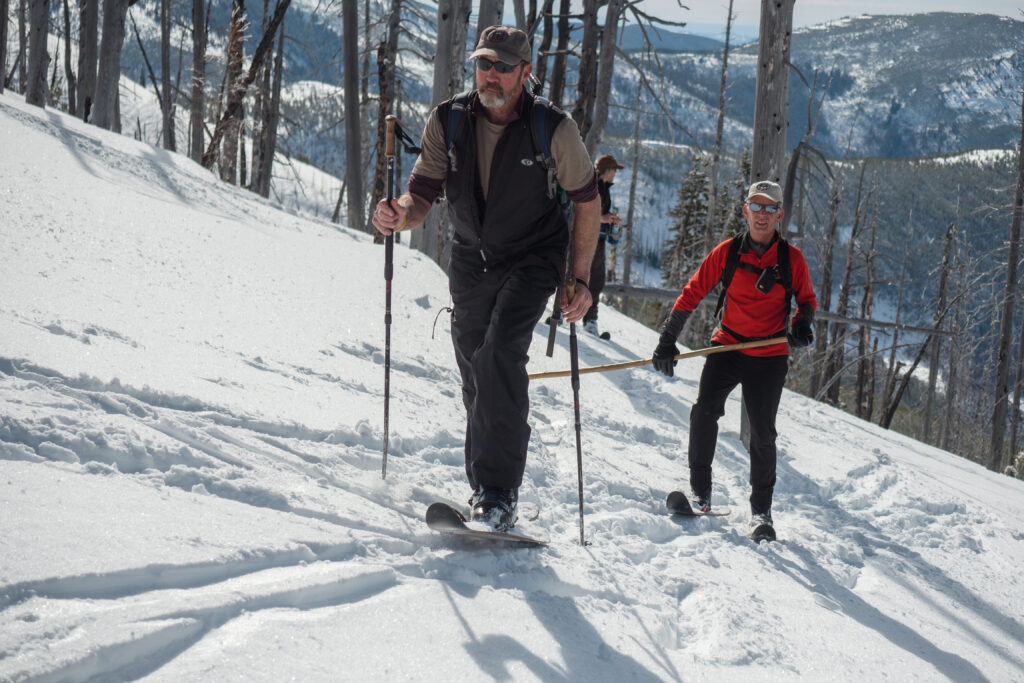
A short drive east of Republic, rise the Kettle Range mountains (aka the Kettle Crest), a sub-range of the Rocky Mountains that typically gets plenty of quality snow during the winter months. The Kettles also boast two of the highest all-season passes in Washington—Sherman and Boulder—which means easy right-off-the-highway access to some of the finest snowshoeing and backcountry skiing in the Northwest.
Despite those winter rec credentials, there are thousands of uncrowded acres of National Forest land to explore where you’ll have plenty of elbow room. Just be sure to show up with your Washington State Sno-Park Pass or face the likelihood of a hefty ticket when you get back to your vehicle.
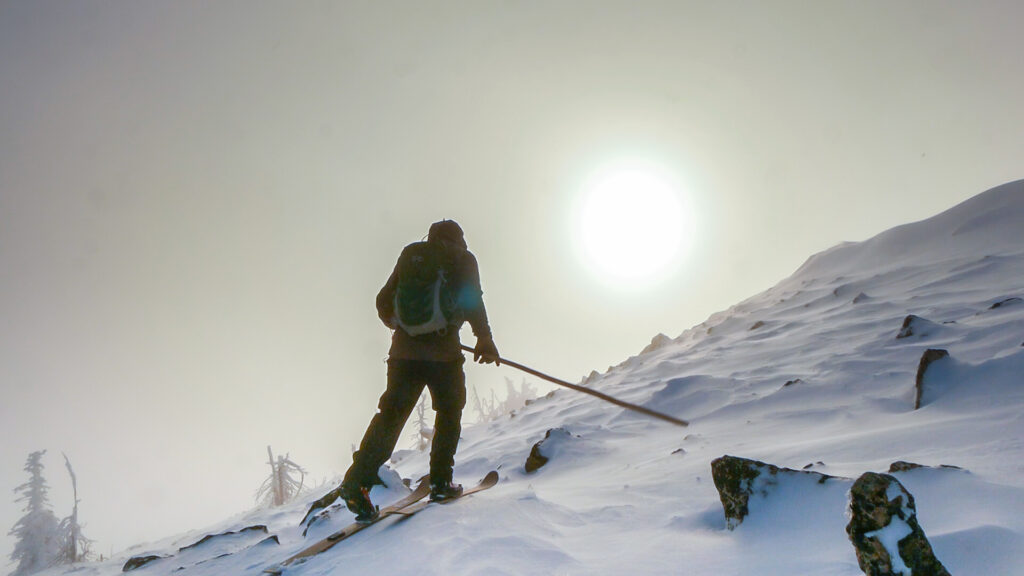
Avalanche Safety in the Kettle Range Backcountry
If you’re planning a winter trip to the Kettle Range backcountry, be sure to do so safely, as the Kettle Range includes many slopes that pose risk of avalanche to skiers and snowshoers. If you don’t have experience with assessing avalanche risk; rescuing buried victims; and do not have and know how to use an avalanche beacon, probe, and shovel, then stick to snowshoeing or skiing the plentiful lower-angled terrain off of Sherman and Boulder passes away from avalanche dangers. While there is no regular avalanche forecast site that covers the Kettle Crest, Avalanche Canada’s forecasting for the Kootenay-Boundary region to the north is a useful resource. You can also call for information from the Colville National Forest office in Republic (509-775-7400), although you should still know how to test the snowpack’s stability yourself and pay attention to changing conditions throughout the day if you will be skiing or snowshoeing in avalanche-prone areas.
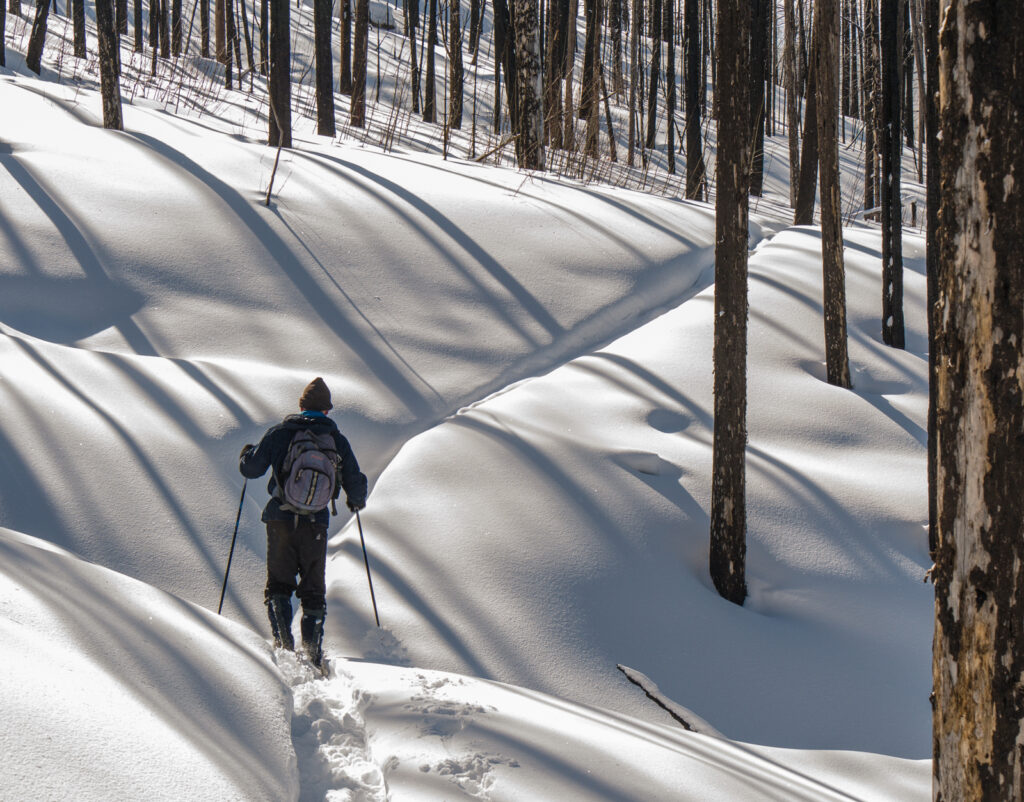
Fire and Ice: How Wildfires Created Some Stellar Ski and Snowshoe Terrain in the Kettle Range
Over the past few decades, wildfires have played a significant role in clearing out underlying brush and burning trees in the Kettle Range, which has naturally thinned parts of the forest around Boulder and Sherman passes, creating some excellent backcountry skiing and snowshoeing terrain in the process.
In 1988, the White Mountain Fire, which was ignited by lightning, burned more than 20,000 acres in the Sherman Pass area. Then in 2015, Okanogan Complex fires burned thousands more acres around Boulder Pass to the north. Both fires created space for forest renewal and the growth of stronger trees while also shaping some incredible skiing and snowshoeing landscapes. These more open spaces offer plenty of skiing and snowshoeing choices once there’s a solid snow base.
Boulder Pass in particular is the perfect area for backcountry skiing, says Nils Larsen, founder of Altai Skis in the nearby town of Curlew. Larsen spends many days traversing the trails there. “It’s great for Altai Hok skis,” he says. A unique design with a climbing skin embedded into the bottom of the skis, Hoks offer quick up and down touring with no transition from climbing to descending required. “They are perfect for this type of terrain as a lot of the runs are short,” adds Larsen. Altai Skis has gained a solid reputation over the years, and they offer rentals and demos as well as skis for purchase.
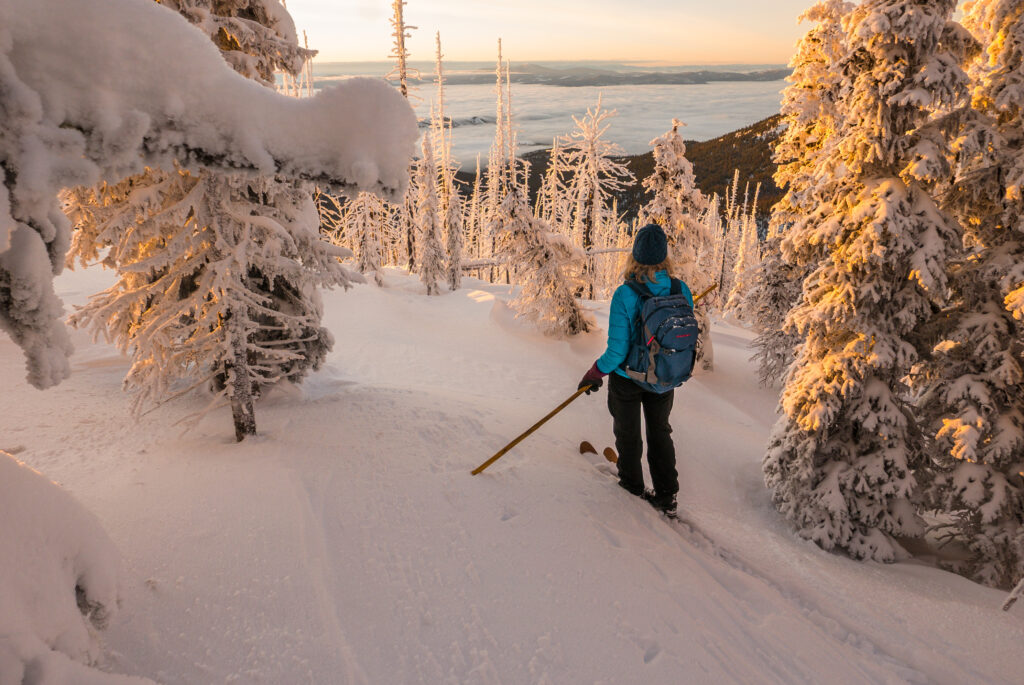
Early in February, the company plans to host an Altai Demo Day at Boulder Pass (conditions and pandemic allowing). The event will include Altai Ski demos, tours, and clinics at Boulder Pass at no cost. You will need a Washington State Sno-Park Pass to park, but Larsen and his team will have those available at the event as well. Check their website or call 509-779-0030 for details.
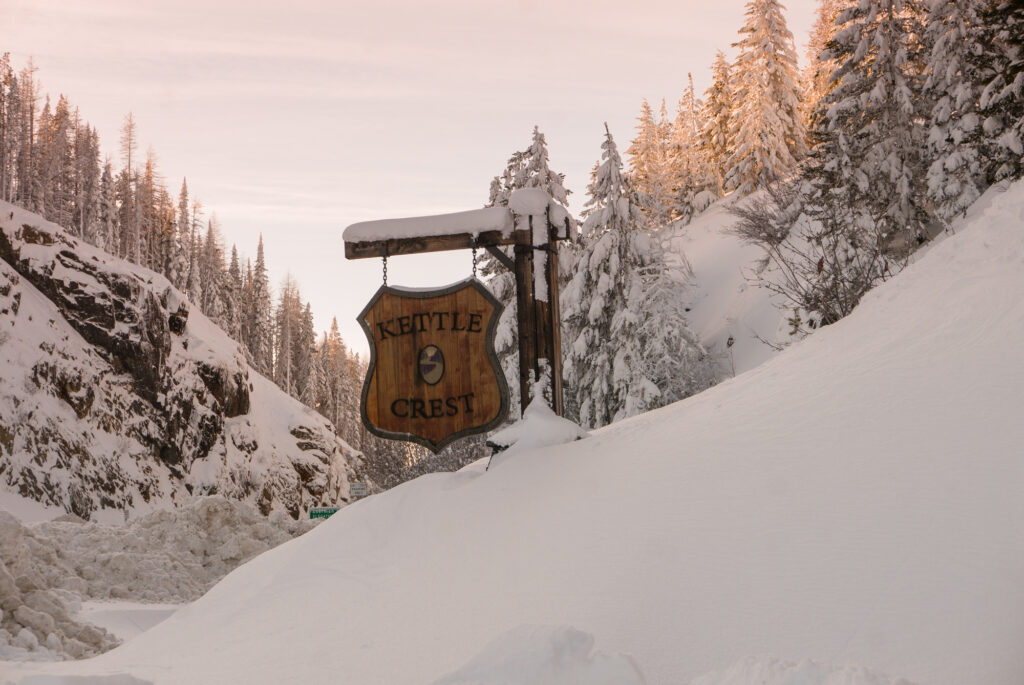
Finding Northeast Washington’s Sherman and Boulder Passes
Both passes are around two and a half to three hours north of Spokane, depending on road conditions. Sherman Pass is situated along the Sherman Pass Scenic Byway on Highway 20 between the communities of Kettle Falls and Republic. Boulder Pass, also known as the Deer Creek Summit Sno-Park, is just south of the Canadian border along Ferry County Highway #602 between the small towns of Orient to the east and Curlew to the west.
Republic, Washington Lodging, Dining, Nightlife & More
The best way to explore the Kettle Range in the winter is to make it a multi-day trip from a home-base in the friendly, authentic mountain town of Republic, an easy drive west from Boulder and Sherman passes. There are several comfortable hotels, house and cabin rentals, and even an Airbnb yurt in Republic, and the Fisherman’s Cove Resort on Curlew Lake is open year-round and has 16 modern cabins as well as RV sites.
One of the cool things about staying in Republic is getting the chance to explore the town’s unique eateries and hangout spots after a cold day in the mountains. Republic Brewing is the preferred gathering spot in town for food, drink, live music and other fun, and the Ferry County Co-Op and Kettle Crust Bakery is a great place to start the day with quality coffee and baked goods. Explore the town’s other lodging, dining, and imbibing options at the Republic Regional Visitors & Convention Bureau or at Ferrycounty.com.
Republic, Washington Is a Summer Adventure Hub Too
While Republic is a fantastic place to play during the winter, there is plenty of recreation during the summer as well. Visit in the summer for hiking and mountain biking trails, ATV riding on miles of back roads and trails, birding, fishing, backpacking, river tubing or kayaking, road biking, and more. Find more Republic-area outdoor recreation suggestions and resources at our other recent Out There article about this special place here.
(Sponsored Content)













